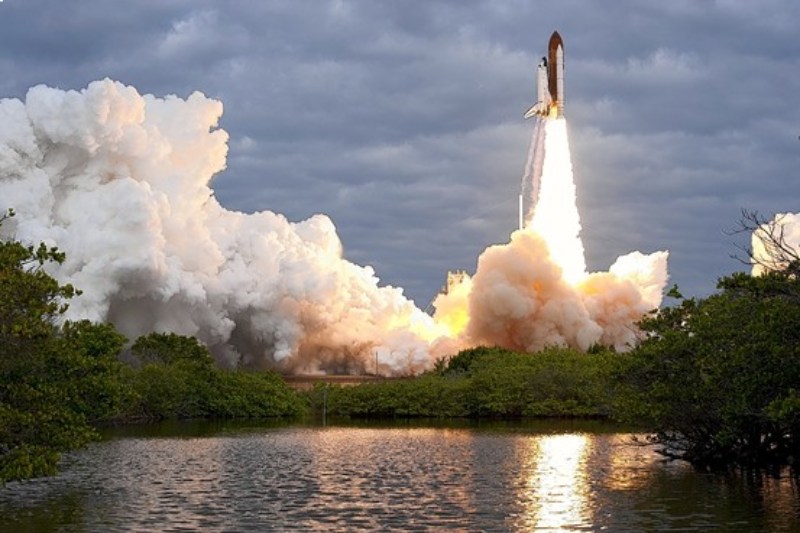This is the first time a Space Shuttle has been hoisted into launch position in almost a decade. However, there won’t be a launchpad for the finished stack very soon.
Endeavour, the Space Shuttle in question, made its final space flight on mission STS-134 in 2011. After landing, Endeavour was decommissioned and sent to the California Science Center in Los Angeles to be displayed.
Although finances were being recruited for a more permanent home, Endeavour remained in a temporary pavilion while the California Science Center planned their flagship display with great ambitions. It wasn’t until 2022 that the Samuel Oschin Air and Space Center was built on the site and the last Space Shuttle stack assembly could start.
In 2023, two solid rocket boosters were installed, and then ET-94, the last flying external tank, was built. At the start of this week, Endeavour was raised using a sling that crane operators would be familiar with from NASA’s Vehicle Assembly Building (VAB) and linked to the exterior tank. The orbiter was shrink-wrapped to protect it from the dirt of the construction site.
Endeavour will stay inside its plastic cocoon while the surrounding area is constructed; at least another 18 months of work are anticipated during this time. It is unlikely that the new facility will open to visitors before 2026. The date of opening is not yet set in stone.
The maneuver is a remarkable engineering achievement. The California Science Center states that in order to raise the 122-foot-long (37-meter) orbiter into its final position, a 450-foot (137-meter) crane was needed. Called “Go For Stack,” the six-month endeavor aimed at assembling every Space Shuttle component was the first of its kind undertaken by the space agency’s engineers outside of an Air Force or NASA facility.
This stack differs significantly from what would have occurred more than ten years ago in a few key ways. One such example is the mounting of the solid rocket boosters’ aft skirts on seismic isolator pods. After all, there are special difficulties involved in presenting a 200-foot-tall (61-meter) Space Shuttle stack in an earthquake-prone area.
There are still three orbiters from the Space Shuttle program including Enterprise, which was utilized for fit checks and approach and landing trials. At the Steven F. Udvar-Hazy Center of the National Air and Space Museum, Discovery is parked in the James S. McDonnell Space Hangar. Atlantis is positioned with its payload bay doors open, seemingly in orbit, at the Kennedy Space Center in Florida.
The Endeavour exhibit will be much more significant than previously since, according to the California Science Center, “this will be the only complete stack of authentic space shuttle flight hardware in existence.”
Topics #NASA #Space Shuttle #Vertical Flight










